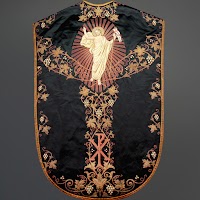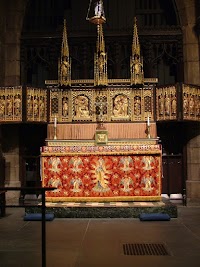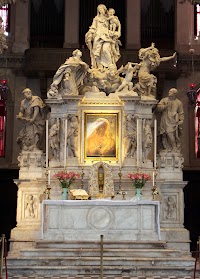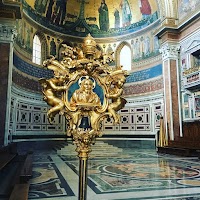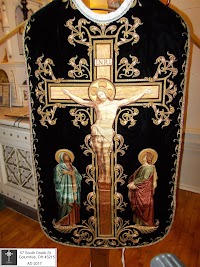 Just a brief post before we leave November and the month of the Holy Souls. One of our readers sent in the following photos from the Jubilee Museum in Columbus, Ohio, where they offer various displays of Catholic liturgical art. Inclusive in their display are some very fin…
Just a brief post before we leave November and the month of the Holy Souls. One of our readers sent in the following photos from the Jubilee Museum in Columbus, Ohio, where they offer various displays of Catholic liturgical art. Inclusive in their display are some very fin…
Our Advertising Partners
-
The global pandemic has disrupted the normal celebration of the Holy Week in Spain, where, for a second year, the government has forbidden t...
-
To the person who simply enjoys beautiful art and architecture, distinctions like "baroque" or "rococo" might seem overl...
-
We live in a very visual, image-based culture and, what's more, there is always lots of curiosity around the matter of traditional papal...
-
The earliest pictorial representations of the Baptism of the Lord were carved in stone, on Christian sarcophagi. Later, during the long Mid...
-
The mitre is one of the most recognizable symbols of prelates of the Church, specifically of bishops up to the Roman pontiff himself -- thou...
-
In a previous article we considered what the exterior of Old St. Peter's was like and today we will turn our attention to the interio...
Blog Archive
-
▼
2017
(63)
-
▼
November
(26)
- Two More Black Chasubles for the Month of the Holy...
- Gregorian Chant in the Parish -- Music as Art
- A Meditation on a Chasuble
- Noble Simplicity
- New Illuminated Altar Cards
- Images of the Catholic Congo
- Liturgical Book Arts: The Latest Edition of the Le...
- Classical Sacred Art Versus Contemporary Realist P...
- Embroidered Antependia – A Further Approach (by Da...
- Santa Maria della Salute: Further Evidence of the ...
- The Historical, Theological, Liturgical and Artist...
- Liturgical Arts at the Lateran Archbasilica (Pavil...
- The History of Watts & Co.
- Pictorial Art as an Opportunity for Liturgical Design
- Feast of the Dedication of the Lateran Archbasilica
- Medieval and Baroque Inspired Vestments from Ateli...
- Precious Mitres from Atelier LAVS
- Lasance's Initials: A Tradition in American Cathol...
- Illuminated Altar Cards by Daniel Mitsui: A Quick ...
- The Attractive Power and Synthesis of the Liturgy ...
- Garry South: Strategist by Day, Vestment Designer ...
- A Unique Variation of the Missae Defunctorum: Skul...
- Black Vestments and More: The Move Away from Minim...
- Views of the High Altar of the Basilica of Sant'Ap...
- Of Requiems, Wood, Iron and Unbleached Beeswax: In...
- Some Unique Black Vestments for All Souls Day
-
▼
November
(26)
Donate
Copyright ©
Liturgical Arts Journal | Powered by Blogger













